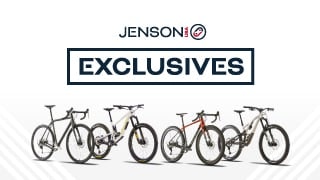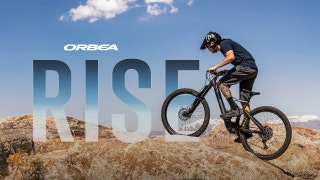Featured Brands
Recommended Products
Black Friday BF20
Get free shipping, on most items, with your $50 purchase today! Same day shipping on most orders if placed by 3pm PST.
PLEASE NOTE:
This offer is only available to physical shipping addresses in the 48 continental United States (no PO Boxes), and some exclusions apply.
Oversize Charges
Some large and/or heavy items are subject to additional oversize charges that are separate from standard shipping costs.
Bike Build Process
All bikes are built, tested, tuned, and ready to ride upon shipment. The bike build process typically takes 2-3 days to complete depending on the bike model and the complexity of the build.
Stock Status
Orders for in-stock items placed by 3PM PST usually ship on the same day. Orders that include special-order or backordered items may be subject to shipping delays depending on product availability. Refer to estimated delivery times in cart when selecting shipping options.

Our Gear Advisors are Ready to Help.
From lightweight cross-country to burly gravity-oriented, there is a wide variety of mountain bike pedals. But no matter which style you choose, they all have the same primary purpose: to transform your pedaling power into the propulsion of your bicycle. Mountain bike pedals thread into the end of your bike’s cranks, which in turn rotate your chainring(s), pulling the chain forward, and delivering power to your rear wheel, which translates into speed down the trail.
Some mountain bike riders prefer flat (aka platform) style pedals, but the majority opt for clipless because they allow you to generate power on the downstroke and upstroke. The term “clipless” is a nod to cycling’s past, when toe clips and straps were used to secure the rider’s foot to the pedal. But as road and mountain bikers began adopting clip-in style pedals, where a cleat affixed to the sole of your shoe engages the pedal, the use of toe clips diminished.
Unlike the majority of modern road pedals, most mountain bike pedals are dual-sided, making it easier to clip in to your pedals, especially during technical or high-speed riding situations. Mountain bike pedals also typically feature adjustable engagement tension, which is usually done via a tensioning screw located on the pedal body. Float, which is the amount of side-to-side angular rotation a pedal allows, is another important factor to consider.
The other primary mountain bike pedals differentiators are cost, weight, mud-shedding ability, and platform size. Low weight (and great mud shedders) such as the Crankbrothers Eggbeater have a very small platform, making them ideal for cross-country or cyclocross racing. Gravity-focused Shimano Saint pedals are heavier, but feature a much larger platform that surrounds the binding mechanism, which both enhances durability and provides a place for your foot to rest even when you’re not clipped in.
Mountain bike pedals are usually sold with cleats specific to those pedals. However, there is a fair amount of cleat-pedal cross compatibility thanks to the widely adopted Shimano SPD cleat-pedal interface. That means, for example, that Ritchey-branded SPD cleats will work with Ritchey and Shimano mountain bike pedals. However, not all cleats will work with all mountain bike pedals so make sure to check.
If you have any questions about mountain bike pedals, call one of our JensonUSA Gear Advisors at 888-880-3811. They can help guide you through the decision making process.
LIMITED TIME BRAND SALES
SAVE 20% OFF ONE FULL PRICED ITEM
SHOP THE GIFT GUIDE
SHOP NOW
SHOP NOW
SHOP NOW
SHOP NOW






